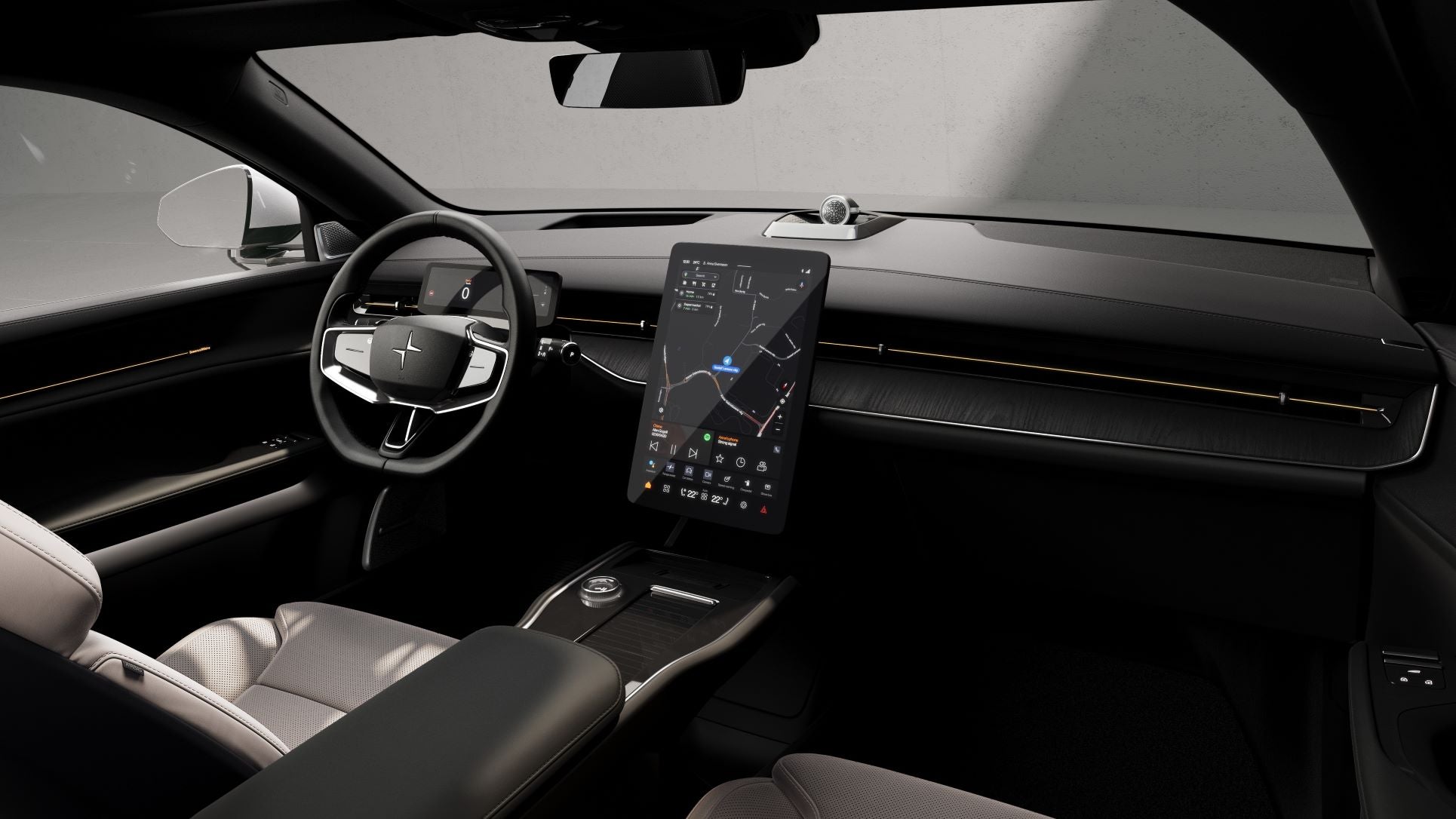
Polestar 3 production for initial launch markets (North America, Europe, China) is planned to begin in Volvo Cars’ facility in Chengdu, China, in an incremental ramp-up phase from mid-2023 with first customer deliveries expected in the fourth quarter of 2023.
Additional manufacturing at the automaker’s Ridgeville, South Carolina factory in the US is expected to follow towards the middle of 2024 from which point supply to North American and other markets is planned to switch from China to the US.
Initial deliveries from this factory are expected around the middle of 2024.
The 3 is the first Polestar SUV and the first model to feature centralised computing with the NVIDIA Drive core computer, running Volvo Cars’ own software. Serving as the AI brain, the high-performance automotive platform processes data from the car’s multiple sensors and cameras to enable advanced driver-assistance safety features and driver monitoring.
The infotainment system is powered by a new Snapdragon cockpit platform from Qualcomm Technologies which provides high definition displays, surround sound and seamless connectivity throughout the vehicle.
Active and passive safety technology includes interior radar sensors which can detect sub-millimetre movements in the interior of the car, to help protect against accidentally leaving children or pets inside. The system is also linked to the climate control system to avoid heat stroke or hypothermia.
How well do you really know your competitors?
Access the most comprehensive Company Profiles on the market, powered by GlobalData. Save hours of research. Gain competitive edge.

Thank you!
Your download email will arrive shortly
Not ready to buy yet? Download a free sample
We are confident about the unique quality of our Company Profiles. However, we want you to make the most beneficial decision for your business, so we offer a free sample that you can download by submitting the below form
By GlobalDataFurther collaborations with industry-leading safety technology partners like Zenseact, Luminar and Smart Eye, provide ADAS technology which integrates seamlessly thanks to the centralised computing power.
The new model has five radar modules, five external cameras and 12 external ultrasonic sensors to support numerous advanced safety features. The SmartZone below the front aero wing collects several of the forward-facing sensors, a heated radar module and camera.
Inside, two closed loop driver monitoring cameras bring leading eye tracking technology from Smart Eye for the first time, geared towards safer driving. The cameras monitor the driver’s eyes and can trigger warning messages, sounds and even an emergency stop function when detecting a distracted, drowsy or disconnected driver.
Android Automotive OS is the in-car operating system, co-developed with Google and fronted by a 14.5-inch centre display. Over the air (OTA) updates are included to allow for continuous software improvement and the introduction of new features without the need to visit a service point.
The new EV launches with a dual motor configuration and a power bias towards the rear. The standard car has 360 kW (489 hp) and 840 Nm of torque. With the optional Performance Pack, total output is 380 kW (517 hp) and 910 Nm. Adjustable one pedal drive is included, as well as an electric torque vectoring dual clutch function on the rear axle. A decoupling function is also available for the rear electric motor, allowing the car to run only on the front electric motor to save energy under certain circumstances.
Advanced chassis control is provided by dual-chamber air suspension as standard, allowing the SUV to adapt between comfort and dynamic suspension characteristics, and the car can adjust its active damper velocity electronically once every two milliseconds (500 Hz).
A 111 kWh battery pack provides a driving range of up to 379 miles WLTP. The lithium-ion battery features a prismatic cell design housed in a protective aluminium case with boron steel reinforcement and liquid cooling. A heat pump is included as standard, using ambient heat for climate and battery pre-conditioning. The vehicle is also equipped for bidirectional charging, enabling future potential for vehicle to grid and plug and charge capability.
Standard equipment includes air suspension, full-length panoramic glass roof, LED lighting inside and out, retractable door handles with proximity sensing, and 21-inch alloy wheels. The Plus Pack and Pilot Pack will be fitted as standard for the first model year and include features like a 25-speaker audio system from Bowers & Wilkins with 3D surround sound and Dolby Atmos capability, soft-closing doors, a head-up display and Pilot Assist.
The optional Pilot Pack with LiDAR from Luminar will add an additional control unit from NVIDIA, three cameras, four ultrasonic sensors and cleaning for the front- and rear-view cameras, providing accurate real-time data about the car’s surroundings especially in the long-range field. This enables enhanced 3D scanning of the car’s surroundings in greater detail and helps prepare the car for autonomous driving.
The optional Performance Pack sharpens driving dynamics even further and includes the maximum power and torque output (380 kW, 517hp and 910 Nm), along with performance optimisation for the air suspension, unique 22-inch forged alloy wheels and additional Swedish gold details.
Polestar 3 is the first car on a new EV base developed by and shared with Volvo Cars.





